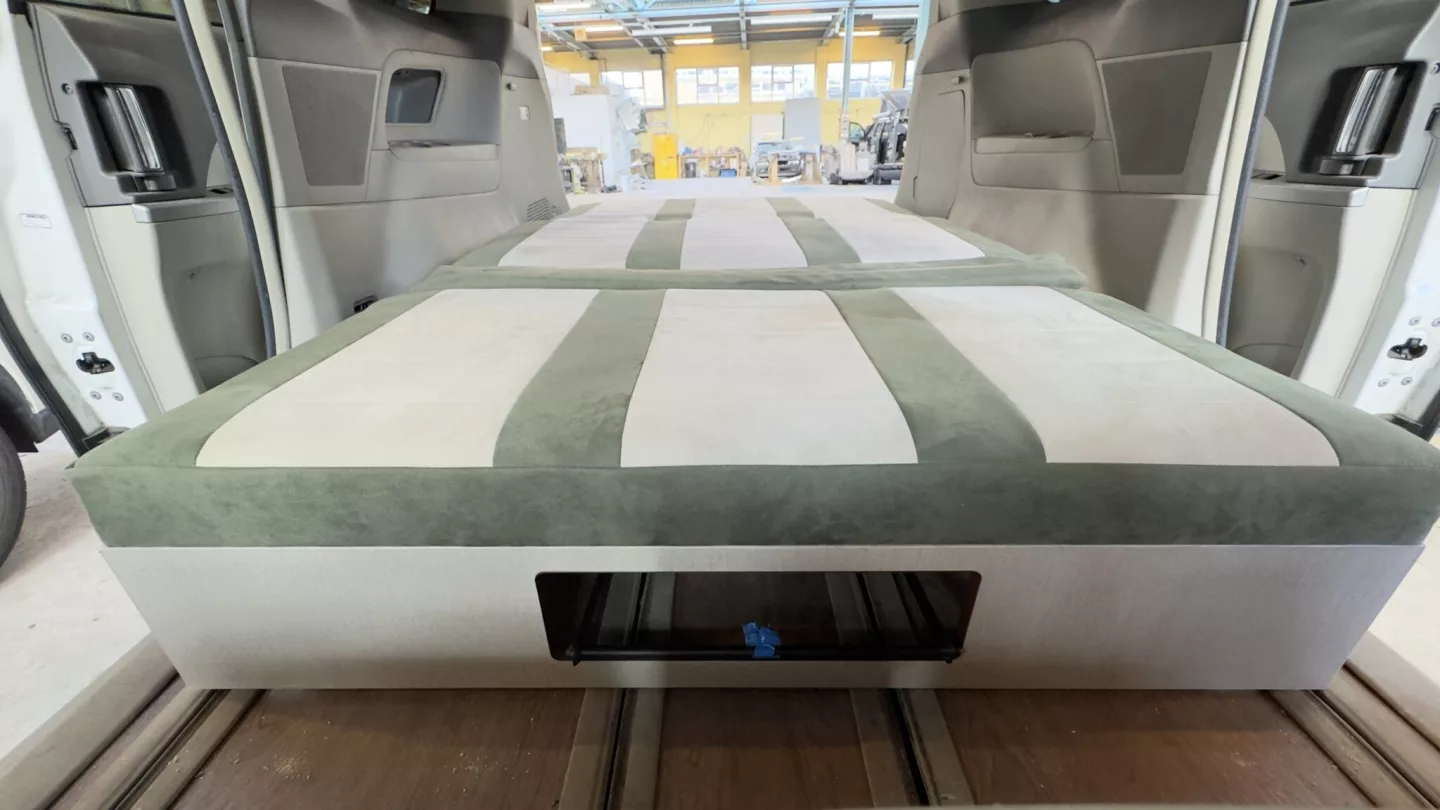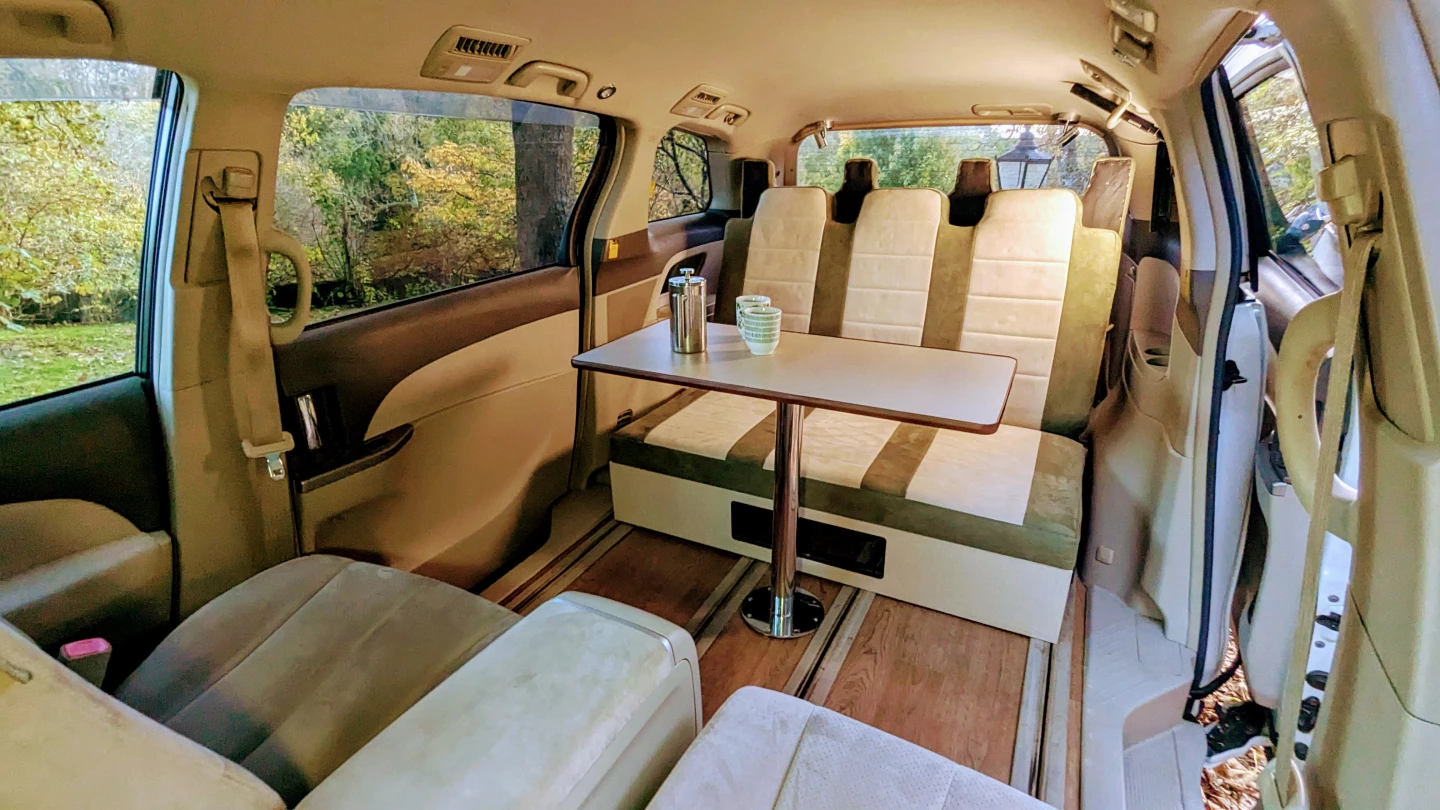Scotland's Campervan Co has been building some of the world's most efficient electrified camper vans for nearly a decade, but it's really outdone itself with its latest build. Designed to deliver highly efficient driving and camping, the all-new Eco Escape packages a five-seat/four-sleeper interior in a Toyota Estima MPV with Hybrid Synergy Drive and electrified AWD. Campervan Co squeezes in a sleek, covert kitchen pod, fully adjustable three-seat bench/bed and dining area, without losing an iota of everyday driving capability.
Campervan Co has recently expanded its lineup with all-electric and hybrid campers based on brand-new vans, but it got its start way back in 2006 converting used vans imported from Japan, a tradition it continues until this day. Along the way, it launched what it calls the world's first hybrid camper van in 2016 by repurposing a used Toyota Alphard Hybrid MPV. It has since expanded its eco-friendly lineup with some of the most innovative hybrid and "tribrid" camper vans the world over.
The Eco Escape debuts as the latest model in Campervan's family of used Japanese MPVs reinvented as Scottish Eco mini-campers. This time around, instead of the Alphard Hybrid, Campervan Co goes with a third-generation Toyota Estima Hybrid.
Around 190 in (480 cm) long, the gen-3 Estima Hybrid features an all-wheel-drive iteration of the Hybrid Synergy Drive system Toyota first introduced on the Prius. Called "E-Four" in Japan, the AWD layout pairs a front axle powered by a combination of 2.4-liter petrol engine and electric motor with a rear axle powered exclusively by its own dedicated electric motor. Called AWD-i and AWD-e in other markets, an evolution of the Estima E-Four system eventually found its way to well-known models like the RAV4 Hybrid and Prius AWD-e.
With that split drive, the Estima Hybrid provides an optimal RV-ready combination of Prius-derived efficiency, low emissions, and all-wheel terrain and weather traction. Campervan Co also stresses that the Eco Escape is Ultra Low Emission Zone (ULEZ) compliant, meaning it doesn't require a daily fee to drive in London.
Campervan Co doubles down on the Estima's inherent efficiency by packing in a full camper equipment suite that encourages buyers to use it as a daily driver, without the need to remove or rearrange much of any equipment. The converter starts by installing a Superglide Varitrak floor-rail-mounted rear "rock-and-roll" bench/bed. The rails add the flexibility to increase legroom while driving and camping, maximize trunk space for hauling cargo, and quickly convert the bench to a full-width bed.
In place of a large standing kitchen that would take a big bite out of passenger space, Campervan Co goes with an ultra-sleek Kitchen Pod installed in the trunk basin. With help from wood covers, it serves as a flat trunk floor during the ride, able to accommodate luggage, backpacks, groceries and camping gear. Removing the covers reveals a small sink with folding faucet on the left, small compressor fridge box in the center, and storage compartment for the induction cooktop on the right. The pod also includes an integrated water tank and a leisure battery system that leaves no need to carry an LPG tank of any kind.
"What we don’t want is for camper vans to be sitting on the driveway for eight months out of 10; that’s a waste of resources and doesn’t realize the incredible benefits hybrids bring to reducing emissions," said Campervan Co founder Gary Hayes. "We designed this hybrid camper van with everyday use in mind – we want customers using this every day for going to work or dropping the kids off at school, then kitting it out for canoeing or camping at the weekend."
Campervan Co completes the build with swivel front seats, a removable central dining table and two added sleeping berths in the roof area. For the latter, buyers can choose between the standard TentBox rooftop tent (RTT) and an available pop-up sleeper roof.
Campervan Co is currently advertising campers built on Estima Hybrids in model years ranging between 2006 and 2013 and mileages between 20,000 miles and 70,000 miles (32,000 and 112.600 km). The £19,995 (approx. US$25,275) base price, of course, means a 2006 model with an odometer set between 60K and 70K miles and a TentBox RTT. Newer and lower-mileage models bump the price up on a sliding scale, and the pop-up roof option adds a flat £1,000 (US$1,275).
Buyers can select specific model years and mileage ranges to get what they identify as the best overall value, and Campervan Co offers a variety of vehicular and camping add-ons, including a dash cam system, portable toilet, microwave, solar charging, bike racks, and reupholstered front cab seats to match the camper interior.
Source: Campervan Co

















